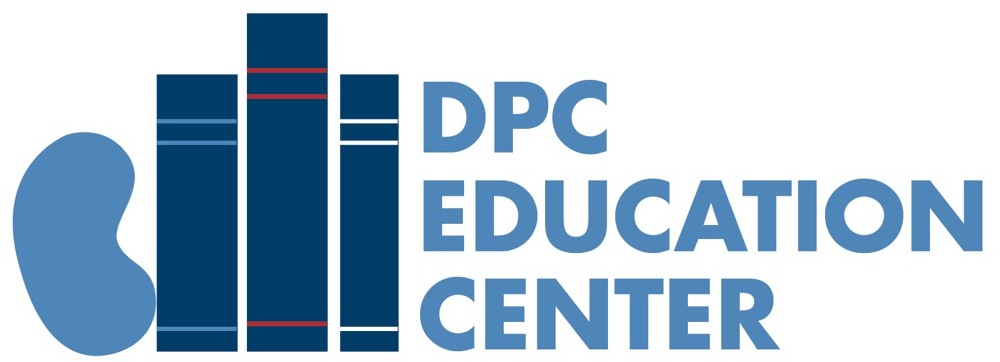The two major types of dialysis therapy are hemodialysis (HD) and peritoneal dialysis (PD) and more information on both therapies can be found here. There are several different varieties of HD and PD that vary based off of location (home and in-center), treatment times (day, night times) and the use of different machines, tubes and supplies. The most basic difference that will impact your diet is that HD is generally done less frequently than PD and uses a machine to filter your blood while PD uses your own abdomen as the filter. Since PD is done more frequently there isn’t as much time for there to be a buildup of waste products in the body. This means in general, there are less dietary and fluid restrictions for PD patients. However, the dialysate solution used in PD is sugar based and you will need to change your diet to deal with the extra sugar.
All dialysis patients need to watch the amount phosphorus (fos-fer-uhs), calcium (kal-see-um), potassium (poe-tass-ee-um), carbohydrates (kar-bo-hi-drates), sodium (so-dee-um) and fluids you take in.
- Phosphorus – is an essential mineral that plays a major role in bone development. Dialysis patients especially those on hemodialysis need to limit the amount of phosphorus they eat. Too much and it disrupts the body’s balance between phosphorus and calcium. This can lead to hardening of soft tissues and removes calcium from the bones making them weak.
- Calcium – is the most abundant mineral in the body and is needed for proper bone growth. Increased calcium is often important for dialysis patients to offset the additional phosphorus in their body.
- Potassium – is a mineral that is important for nerve and muscle function. Too much potassium may lead to muscle failure and in rare cases heart failure. Dialysis can only remove a fixed portion of potassium so it is important to limit foods that are high in the mineral. If you are a PD patient, you don’t have to limit potassium as much as other forms of dialysis.
- Carbohydrates – are in a class of nutrients that includes sugars and starches that provide a major source of energy in the body. Carbohydrates are important for all diets, but especially important for hemodialysis (HD) patients as they become a major portion of your diet. Peritoneal dialysis patients need to eat fewer carbohydrates because the dialysate solution is largely made of sugar and the body absorbs those calories.
- Sodium – is important because too much may increase blood pressure and lead to fluid retention. Sodium most commonly found in salt, can also lead to excess thirst. As a dialysis patient, when you go to treatment and there is excess fluid, the heart has to work harder to move the extra fluid leading to increased blood pressure and cramping. Sodium intake is most important for HD patients, because you are removing several days of excess fluid instead of more continually like PD and your natural kidney functions.
- Calories – a calorie is a unit of energy that is stored in the food we eat. The calorie listed on nutritional labels is knows as a kilocalorie or 1000 calories. However, for simplicity we will use the familiar term calorie instead of kilocalorie. It is important to get enough calories to fuel your daily activities. If you don’t have enough calories, you will break down your body’s protein. It will be important to work with your dietician to ensure you are getting the right amount of calories and from healthy sources.
The hard part of the renal diet is all of these nutrients and minerals are important for good health, but you have to keep them in balance and within recommended target levels. General guidelines for patients on dialysis, which will vary depending on body size, are listed below. Remember, these are just estimates.
Nutritional Guidelines for Chronic Kidney Disease Patients *In the example 150lb individual was the standard level. (5)
|
Nutritional Parameter |
Stages 1-4 CKD |
Stage 5 Hemodialysis |
Stage 5 Peritoneal Dialysis |
|
Calories (kcal/kg/d) |
35 < 60 yrs = 2380 Calories 30-35 ≥ 60 = 2040-2380 Calories |
35 < 60 yrs |
35 < 60 yrs |
|
Protein (g/kg/d) |
0.6-0.75 = 41-51 g |
1.2 = 81 |
1.2-1.3 = 81-88 |
|
Fat (% total kcal) |
For patients at risk for CVD, < 10% saturated fat, 250-300 mg cholesterol/d |
||
|
Sodium (mg/d) |
<1500 |
<1500 |
<1500 |
|
Potassium (mg/d) |
Match to lab values |
2000-3000 |
3000-4000 |
|
Calcium (mg/d) |
1200 |
≤ 2000 from diet and meds |
≤ 2000 from diet and meds |
|
Phosphorus (mg/d) |
Match to lab values |
800-1000 |
800-1000 |
|
Fluid (mL/d) |
Unrestricted w/ normal urine output |
1000 + urine 34 fl oz |
Monitor; 1500-2000 51-68 fl oz |
Please note that some foods have all nutrients such as phosphorus content listed on their nutrition labels, but most don’t. To find out where you can find this information, ask your renal dietitian.
Also each person is different and may require numbers that fall outside of the recommended guidelines.
- National Chronic Kidney Disease Fact Sheet 2010. Centers for Disease Control and Prevention. www.cdc.gov/diabetes/pubs/factsheets/kidney.htm.
- Prevention. American Diabetes Association. www.diabetes.org/advocate/our-priorties/prevention/?loc=DropDownADV-prevention.
- Fouque D, Laville M. Low Protein Diet for Chronic Kidney Disease in Non-diabetic Adults. The National Center for Biotechnology. www.hcbi.nlm.nih.gov/pubmed/19588328
- Sodium: Tips for People with Chronic Kidney Disease. National Kidney disease Education Program. www.nkdep.nih/gov/resources/nutrition-sodium-508.pdf
- Beto J, Bansal V. Medical nutrition therapy in chronic kidney failure: integrating clinical practice guidelines. American Dietetic Association. 2004;104:404-409.



